Bioretention ponds are stormwater management basins designed to capture, treat, and manage unfiltered runoff water. As water passes over impervious surfaces like roads, parking lots and rooftops, it gathers pollutants that can be harmful to natural ecosystems and wildlife if it is not filtered away.
Bioretention ponds are constructed to mimic natural ecosystems and use vegetation, soil, and engineered components to filter and retain stormwater runoff, helping to reduce flooding, erosion, and pollution of water bodies.
Bioretention ponds are also known as infiltration basins, bioretention areas, or simply “bio ponds.”

East Coast Civil Group constructed this bioretention pond in Morrisville, NC.
East Coast Civil Group is an established civil construction contractor with experience and expertise in the construction of bioretention ponds. We are are well-equipped to handle the excavation, grading, and installation of the various components that make up a bioretention pond.
As a civil construction contractor, East Coast Civil Group works closely with engineers, landscape architects, and environmental experts to ensure that a bioretention pond meets design specifications, local regulations, and environmental standards.
Key Features of Bioretention Ponds

Key features of bioretention ponds include:
Design:
Bioretention ponds are typically designed with a shallow, excavated basin that allows water to collect and infiltrate into the soil beneath.
The basin is lined with layers of different materials, including gravel, sand, and specially formulated soil mixtures to facilitate water treatment.
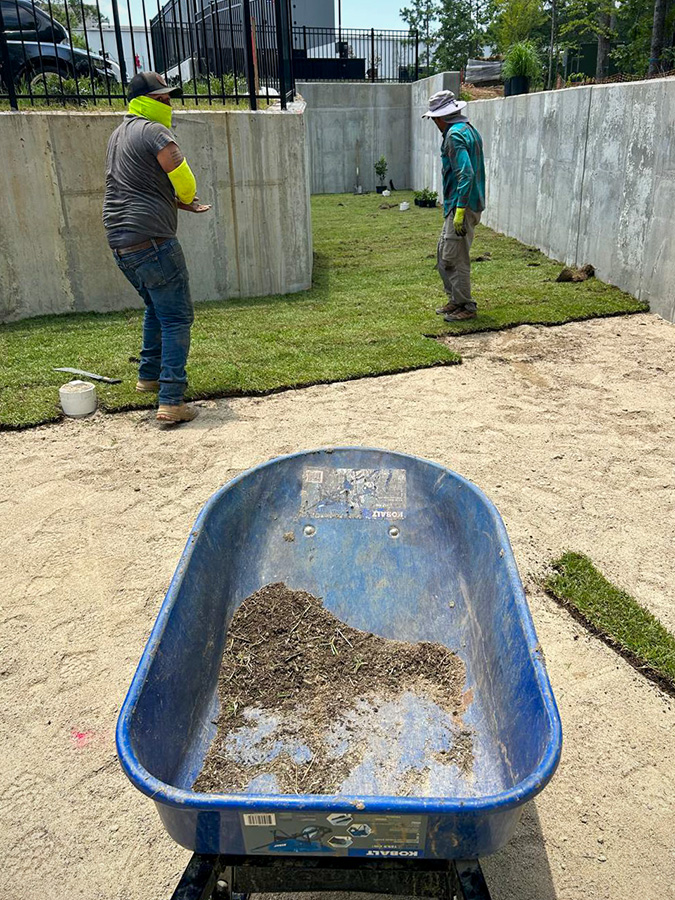
East Coast Civil Group workers place the soil layer during construction of a bioretention pond.
Vegetation:
Native plants and vegetation are an essential component of bioretention ponds. The plants help to enhance the filtration process by absorbing excess nutrients and contaminants from the stormwater. They also promote infiltration and evapotranspiration (the combined process of water evaporation from the soil surface and transpiration from plant leaves).
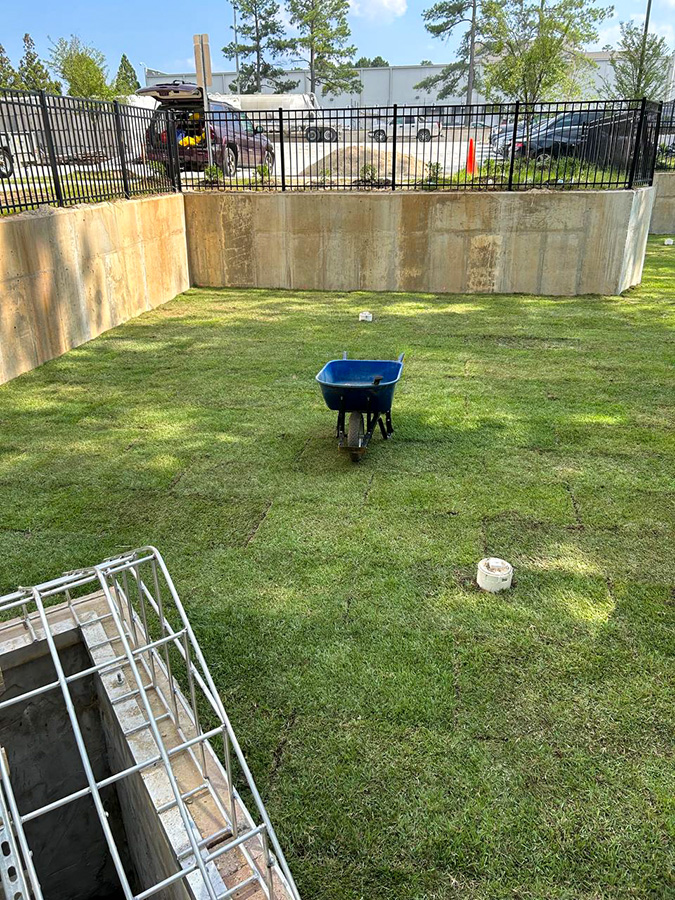
Bioretention pond basin in Morrisville NC, after a layer of soil & vegetation mixture has been installed by East Coast Civil Group.
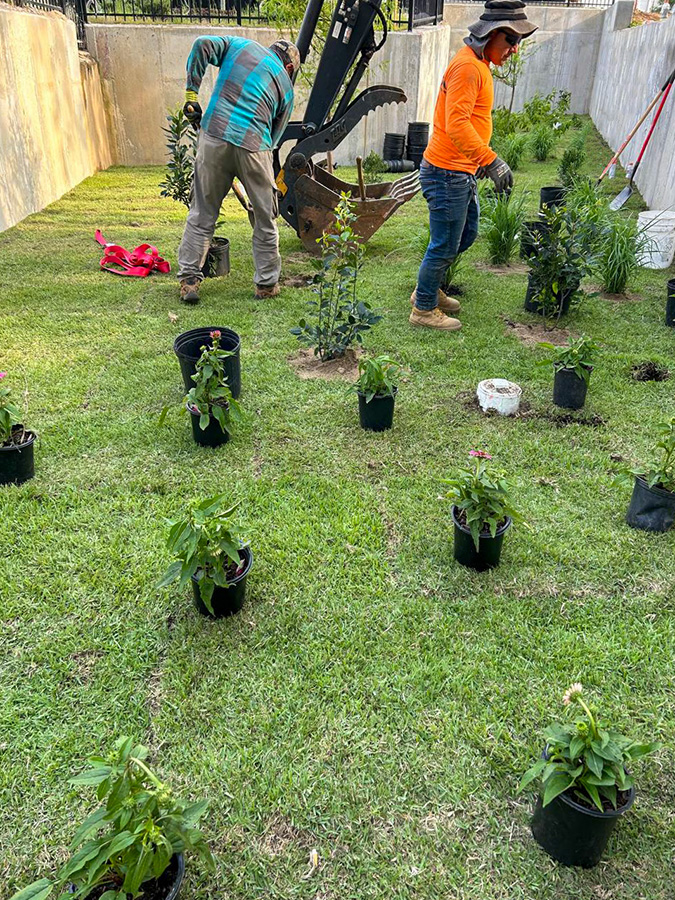
With the soil layer completed, East Coast Civil Group workers begin placing native plants and vegetation in the bioretention pond.
Pretreatment:
Stormwater runoff is first directed into the bioretention pond, where it undergoes preliminary treatment to filter away larger debris and pollutants before the water passes through the soil layers.
Filtration and Treatment:
As stormwater flows through the layers of soil, sand, and gravel, it undergoes a natural treatment process. This process includes physical filtration, biological uptake, and chemical reactions, which help remove pollutants like sediment, heavy metals, oils, and nutrients.
Infiltration:
Bioretention ponds are designed to encourage water infiltration into the underlying soil. This helps recharge groundwater supplies, reducing the burden on stormwater infrastructure and reducing the volume of runoff that reaches nearby water bodies.
Overflow and Outlet:
To prevent overflow during heavy rainfall events, bioretention ponds are equipped with an outlet structure that releases excess water once the pond reaches its capacity. This ensures that the pond can effectively manage runoff from various storm events.
Bioretention Pond Construction
Creating a bioretention pond involves careful planning, engineering, and construction to ensure its effectiveness in managing stormwater runoff. Here are the general steps involved in making a bioretention pond:
Site Selection:
Factors to consider when choosing an appropriate location for the bioretention pond include the topography, proximity to pollution sources, and the area’s drainage patterns. The site should be large enough to accommodate the expected volume of stormwater runoff.
Design and Engineering:
A qualified engineer can design an effective bioretention pond. The design should consider the site’s soil type, infiltration rates, and the anticipated volume and frequency of runoff. The pond’s size, depth, and shape will depend on the site-specific requirements.
Excavation:
The construction process begins with excavating the area to create the bioretention basin. The pond’s shape and size are carefully formed during this stage. East Coast Civil Group’s expertise in excavation work of any size will ensure that the basin is shaped precisely and correctly.
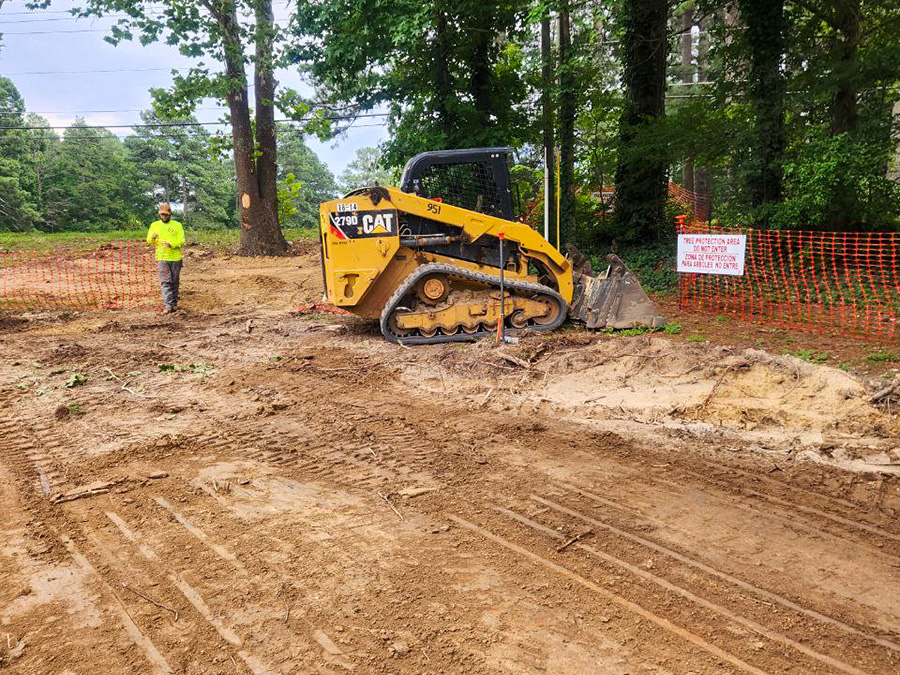
Underdrains and Outlet Structure:
Underdrains are installed to control the water level in the bioretention pond. These underdrains help prevent water from becoming stagnant and ensure proper infiltration. The outlet structure is also installed to regulate the flow of water out of the pond during heavy rainfall.
Pond Liner:
Some bioretention ponds may require a liner, especially if the soil’s natural infiltration capacity is low. The liner prevents water from escaping through the soil and encourages water to move through the bioretention layers.
Layer Installation:
A series of layers within the pond facilitate stormwater treatment. The layers typically include the following, from bottom to top:
a. Gravel Layer: The bottom layer consists of coarse gravel to promote drainage and prevent soil clogging.
b. Sand Layer: Above the gravel layer, a finer sand layer is added to enhance filtration and water treatment.
c. Soil Mix: A specially engineered soil mixture is added on top of the sand layer.
This soil mix is designed to have a high infiltration rate and adequate nutrient-retention capacity.
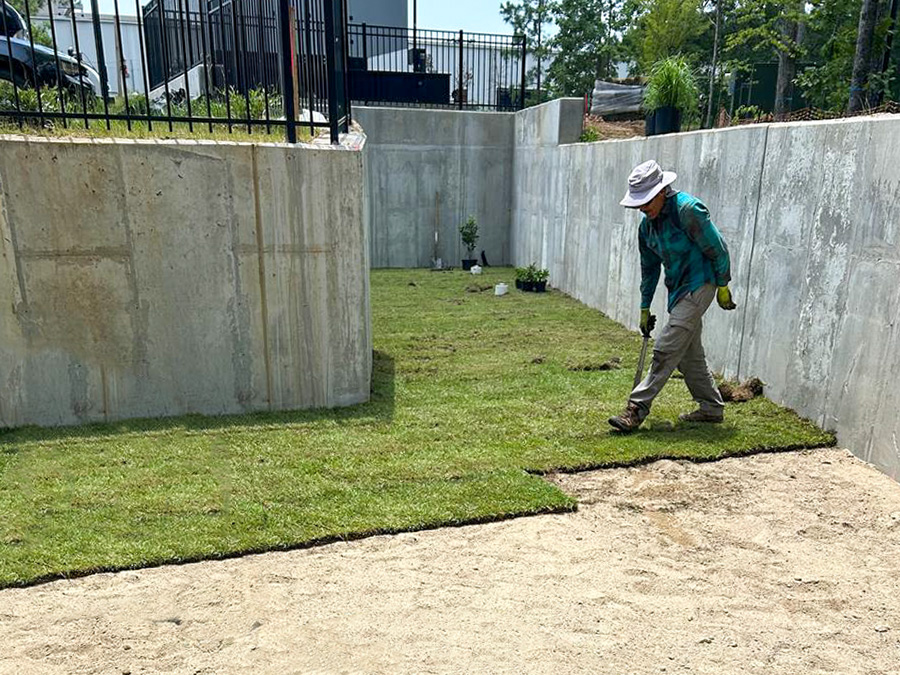
Planting:
Once the layers are in place, the bioretention pond is planted with a selection of native vegetation suitable for the local climate. The plants not only enhance the pond’s aesthetic but also play a crucial role in pollutant removal and water absorption.
Mulching:
Mulch is spread around the plants to retain moisture, reduce weed growth, and protect the soil surface from erosion.
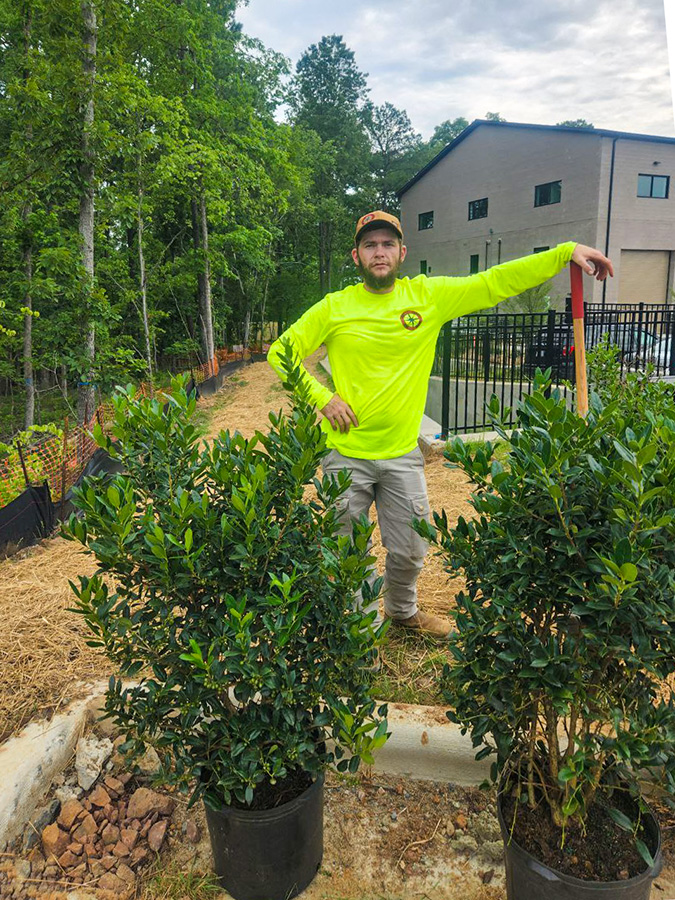
Inlet and Outlet Structures:
Install the inlet structures to direct stormwater into the bioretention pond. The outlet structure regulates the water level and controls the flow of treated water out of the pond.
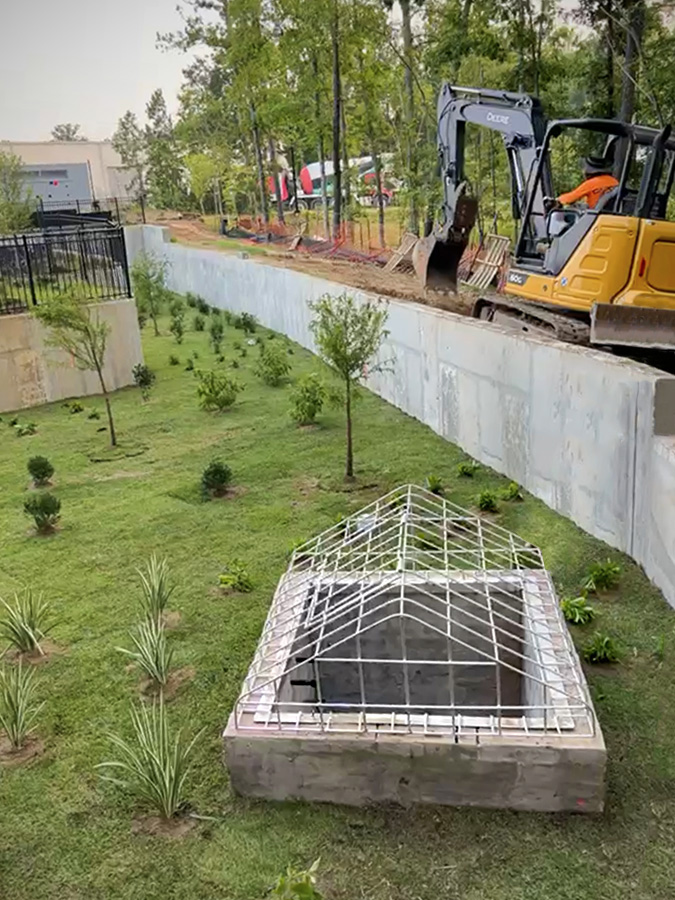
Overflow inlet of a bioretention pond constructed by East Coast Civil Group.
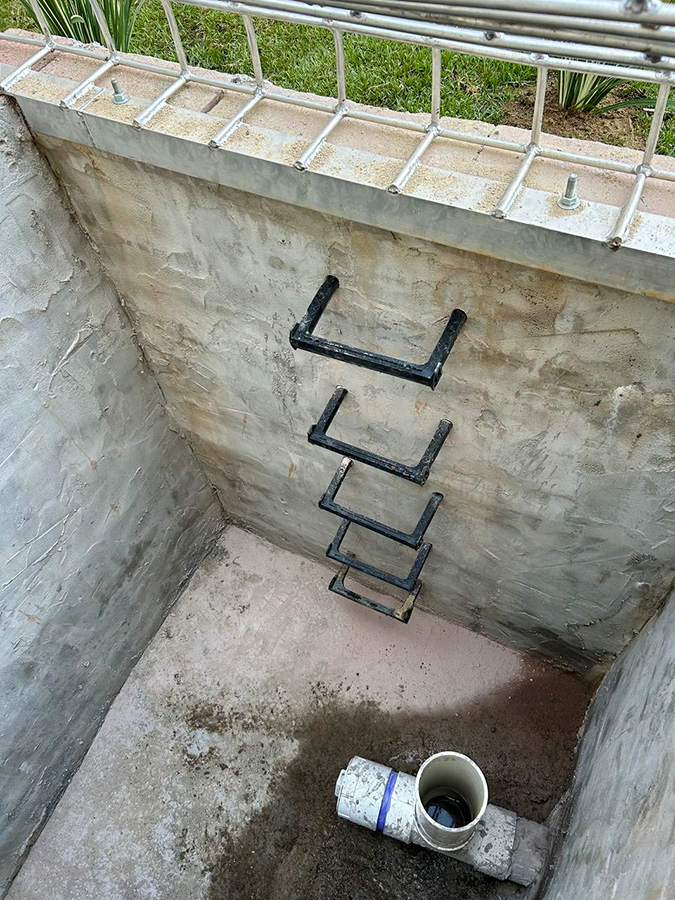
Interior view of the overflow inlet well. The outflow pipe can be seen at the bottom.
Proper construction and maintenance are essential to the success of a bioretention pond in managing stormwater and providing environmental benefits.
Benefits of a Bioretention Pond
Benefits of bioretention ponds include:
Improved water quality:
By effectively filtering out pollutants, bioretention ponds help to improve the quality of water that enters natural water bodies, reducing the risk of contamination.
Flood control:
Bioretention ponds can help mitigate flooding by retaining and slowly releasing stormwater, reducing the peak flow rate during heavy rain events.
Enhanced aesthetics:
With the use of native plants and greenery, bioretention ponds can enhance the visual appeal of urban and suburban areas.
Habitat creation:
These ponds provide habitat and foraging opportunities for various wildlife species, including birds, insects, and small mammals.
Groundwater recharge:
By allowing water to infiltrate the soil, bioretention ponds contribute to the recharge of groundwater reserves.
Overall, bioretention ponds are a sustainable and eco-friendly approach to stormwater management, providing multiple environmental benefits while reducing the negative impacts of urbanization on local water resources.
Follow us on LinkedIn and Facebook. East Coast Civil Group is a proud member of the L&L Construction Group family of companies, along with our sister companies Triangle Ready Mix and L&L Concrete, Inc.
